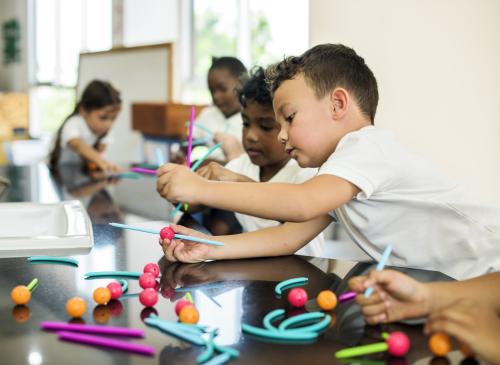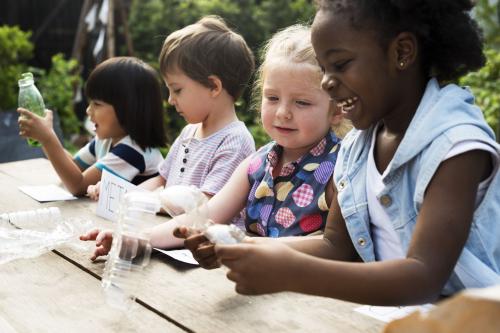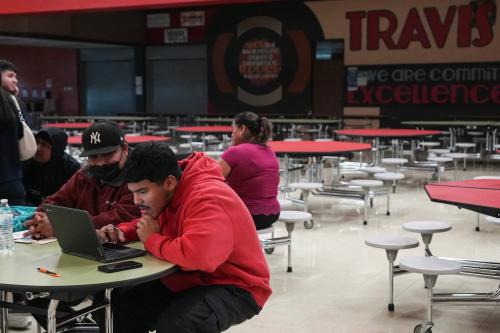We congratulate Miguel Cardona, Connecticut’s current education commissioner, on his nomination to serve as secretary of education under President-elect Biden. Following Senate confirmation, it will benefit children, teachers, and families alike to have an experienced public school educator at the helm of the U.S. Department of Education. Reactions to Cardona’s nomination are laudatory, with support from public education advocates, policymakers, and the nation’s major teachers’ unions, respectively stating that they were “delighted” by the decision, “applauded” Cardona as “an experienced educator and visionary leader,” and appreciated his “deep respect for educators.”
Cardona’s nomination reflects a vital federal investment in educational equity. Drawing on his own experiences growing up in a Meriden, Connecticut housing project with parents from Puerto Rico and as an English language learner, Cardona aims to narrow the opportunity gap through a comprehensive approach that supports schools and communities. His top priorities “inside the schoolhouse” include ensuring that all students read by third grade and providing all students with access to a high-quality curriculum. Beyond the school walls, Cardona is eager to collaborate with other federal agencies to assist students struggling with housing and food insecurity. He offers a strengths-based approach, recognizing resources that students bring from their communities.
Yet, Cardona’s most pressing concern at the Department of Education will be the rebuilding of America’s schools in the wake of COVID-19. Education Week reported in the fall that 74 percent of the 100 largest school districts in the United States planned to reopen exclusively with remote learning, affecting over 9 million students. In his current role, Cardona works with his staff to bridge the digital divide. Connecticut students who had little access to the necessary technology could not participate in their classes until the state’s Everybody Learns Initiative distributed approximately 140,000 laptops and 44,000 home internet connections. Their CT Learning Hub, launched earlier this year, emphasizes quality tools for online education.
Cardona recognizes the need to improve access to resources for students and educators. However, access alone is only part of the solution. Access must also be coupled with evidence-based implementation, or pedagogy, to produce high-quality outcomes. There are lessons to be learned from poor implementation in some of the nation’s cyber charter schools. Despite technological resources, desired outcomes often fail to appear, as witnessed in data from Indiana noting that students in third through eighth grade experienced significant, long-term declines in math and English/language arts skills after moving from traditional to cyber charter schools. This study builds on prior evidence from Ohio, Pennsylvania, and across the United States.
Indeed, our own data speak to problems of online learning implementation. This summer, at Temple University we conducted an online survey of 181 highly educated parents of children in preschool through third grade to investigate the use of educational video conferencing during the pandemic. Parents were asked about the frequency and length of student-teacher video conferences, and how long their child could pay attention. The results from 30 parents of 3- to 4-year-old preschool students raised concern. Students were expected to participate in video conferences with their teacher that lasted an average of 29 minutes, but they could only pay attention for an average of 14 minutes. By comparison, 5- to 7-year-olds had video conferences with their teacher that lasted 31 minutes on average and paid attention for an average of 29 minutes.
Beyond ensuring the coupling of tech access with pedagogy, we urge Cardona to keep parents in the conversation. The connection between home and school is critical because 80-90 percent of a student’s waking time is spent outside of school. Indeed, our survey reported that 39 percent of 31 parents with 3- to 4-year-old children were at least “somewhat concerned” about their children’s academic skills and 65 percent were at least “somewhat concerned” about their children falling behind socially. Among 150 parents with 5- to 7-year-olds, 57 percent were at least “somewhat concerned” about academic skills, while 70 percent were at least “somewhat concerned” about social skills. A narrow focus on academic outcomes alone might, ironically, thwart academic progress.
Our recent Brookings Policy 2020 report highlights how a breadth of skills approach that ties together cradle-to-career competencies support learning for all children. Importantly, this model offers a way to reframe the pandemic as an opportunity for educators and policymakers to rethink education for the 21st century. Based on the scientific evidence and preliminary data from a recent school program, we look forward to challenging others, as well as Cardona, to reimagine education for our time.
As with the child care literature in early education, we have well learned that our children’s future is a bipartisan issue. To allow all children to thrive, however, requires both equal access to education and a commitment to high-quality education that is based on the science of learning.







Commentary
Rebuilding America’s schools: The new secretary of education will need to prioritize both access and breadth of skills
December 23, 2020